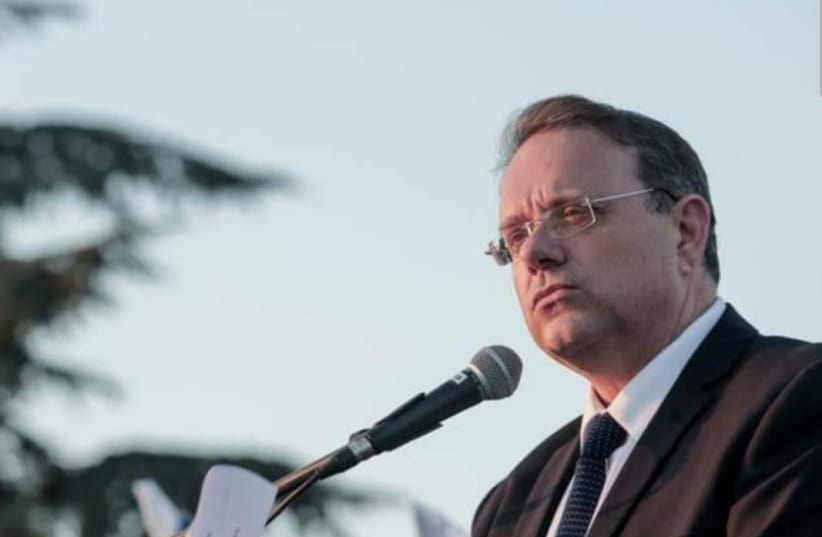When Theodor Herzl arrived in the Land of Israel, the Jerusalem he saw was a small, provincial town blighted with neglect and overcrowding. Yet in his eyes he saw beyond the walls, and envisioned a Jerusalem of the future with a modern exemplary society mixed with old world charm.
Days after Israel's Declaration of Independence, the Jewish quarter of Jerusalem fell to the Jordanians. The holy city and its quaint, historic alleyways were emptied of all Jews. Israelis had mixed emotions. On one hand, there was the euphoria of finally achieving independence. On the other hand, there was the loss of half of its capital city including the Western Wall and Temple Mount, the heart of Zion. The Jewish State was established and the people of Israel had returned to their indigenous homeland but without many of their important heritage sites.
Divided and cleansed of the Jewish population, the Old City remained under Jordanian occupation for 19 years. Zion Gate, one of the main entrances to the Old City was shut with iron locks and the entry of Jews was banned under threat of Jordanian army snipers.
A short distance from Zion Gate just outside the walls of the Old City and the 1948 armistice line between Jordan and Israel sits the Tomb of King David. There on the roof is a small room known as the "President's Room on Mount Zion." During the Jordanian occupation, President Yitzhak Ben-Zvi would come to this white-domed room and greet visitors to Jerusalem on holidays. The rooftop where this small cubicle is located, was the closest place which one could watch, pray and dream about touching the stones of the remnants of our Holy Temple.
Two Jerusalems?
The term "Zionism" has come to mean the revival of the people of Israel in its homeland. It is derived from the word Zion, a poetic reference to Jerusalem. For the first time in generations, the descendants of those dispossessed from their land began rejuvenating it. Equipped with faith and a pioneering spirit, the Hebrew-speaking laborers dried up the swamps, erected buildings, developed farms and fulfilled a longing for renewal.
Yet, what is Zionism without Zion? The triumph of 1948, did not include the source, the sanctuary, the place to which the faithful prayed during two thousand years of exile -- the Temple Mount, the Western Wall, the Old City.
Since the destruction of the two Temples, throughout the years of occupation by the Byzantines, the Crusaders, the Ottomans, the British Empire and the Kingdom of Jordan, Jerusalem has been a religious and spiritual symbol, but prohibitions on freedom of worship have been imposed by all the foreign powers who ruled it. These restrictions occurred not only in Jerusalem. Let us not forget to mention the prohibition banning Jews from entering the Tomb of the Patriarchs and Matriarchs in Hebron which lasted for 700 years.
With the liberation and unification of Jerusalem in the Six Day War of 1967, the State of Israel demonstrated respect for the others religions that also hold the city sacred.
For the first time in generations, freedom of worship was granted to people of all faiths. The Muslims who sanctified the holiest place in Judaism as their own, continued to pray there. So too did Christians, Armenians and others enjoy a new-found freedom of worship.
Yet the battle against Jewish history continues. For the past 54 years that Israel has controlled the Old City, thousands of archeological finds linking our historic connection to this sacred place are being destroyed almost on a daily basis. We have sadly witnessed the desecration and destruction of burial sites, coins, symbols and artifacts – ancient relics of such value that other nations could only be jealous of. We have seen physical destruction on the one hand and attempts at historical revisionism by extremists on the other.
While freedom of worship has been given to all religions in the city, there is excessive strictness imposed upon Jews seeking to visit the Temple Mount. This undermines the narrative the State of Israel has tried to maintain, both internally and externally.
With the unification of Jerusalem, the lands upon which our ancestors walked were liberated. It was these ancestors who inherited and bequeathed to the world the Book of Books. The sites mentioned in the Bible have been ransacked in an attempt to de-Judaize them. It is gut-wrenching to know the desecration of these historic sites continues while international bodies turn a blind eye.
"As there is one sun and as there are not two Jerusalems," the great Zionist poet Uri Zvi Greenberg wrote.
Today, historic Jerusalem is united, rebuilt, clean but not always fair for Jews. It could have only been the Jewish people who united the city and woven a spirit of unity and inter-faith respect.
The State of Israel is developing Jerusalem outside the walls, as well as within, exactly according to Herzl's vision. There is an amazing fabric of new neighborhoods, public spaces, government institutions, schools, yeshivas and places of culture, slowly rising and enveloping the walls of the Old City.
Today, 54 years after the re-unification and liberation and in light of the significant diplomatic steps, Jerusalem, the capital of Israel, is beginning to receive its rightful status. The opening of more and more embassies in the capital bolsters our strength. Preserving the fabric of life between the religious and the secular, between Haredim and Arab residents and Jerusalemites of all faiths will lead us to fulfill the words of the prophet Isaiah: "For My house shall be called a house of prayer for all nations."
Happy Jerusalem Day.
Yaakov Hagoel serves as the Chairman of the World Zionist Organization
